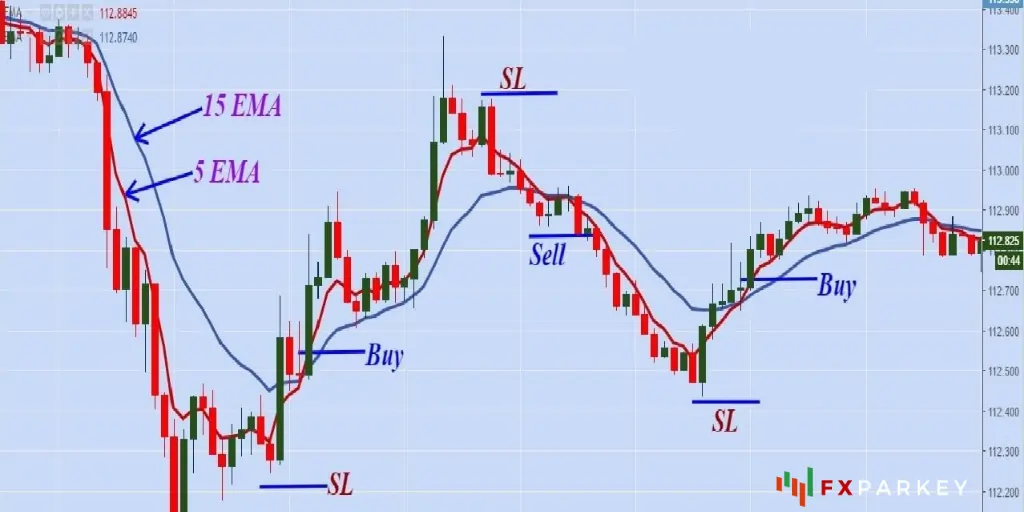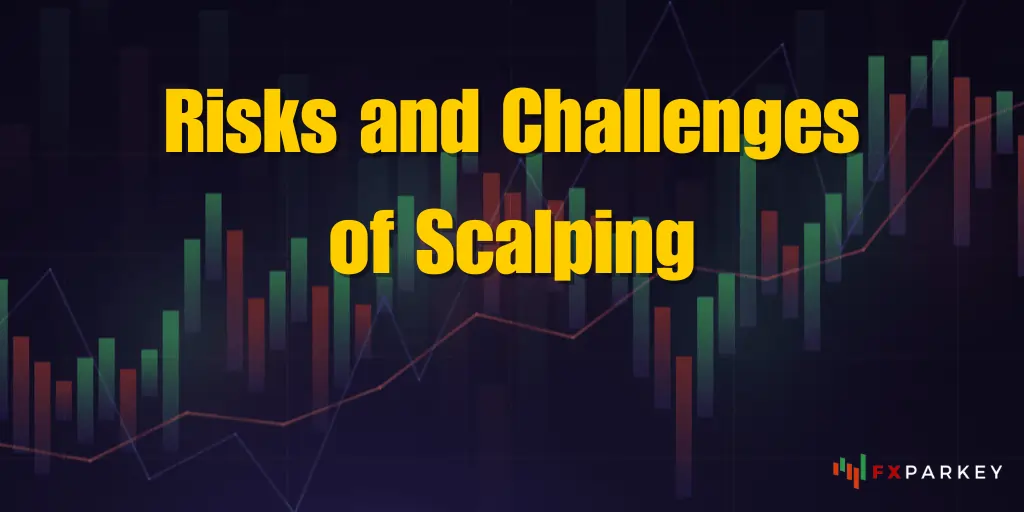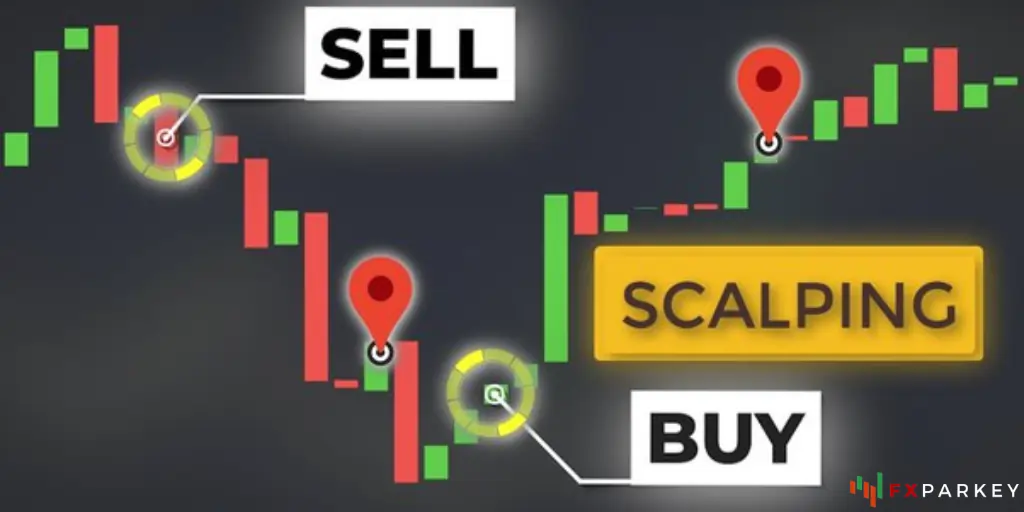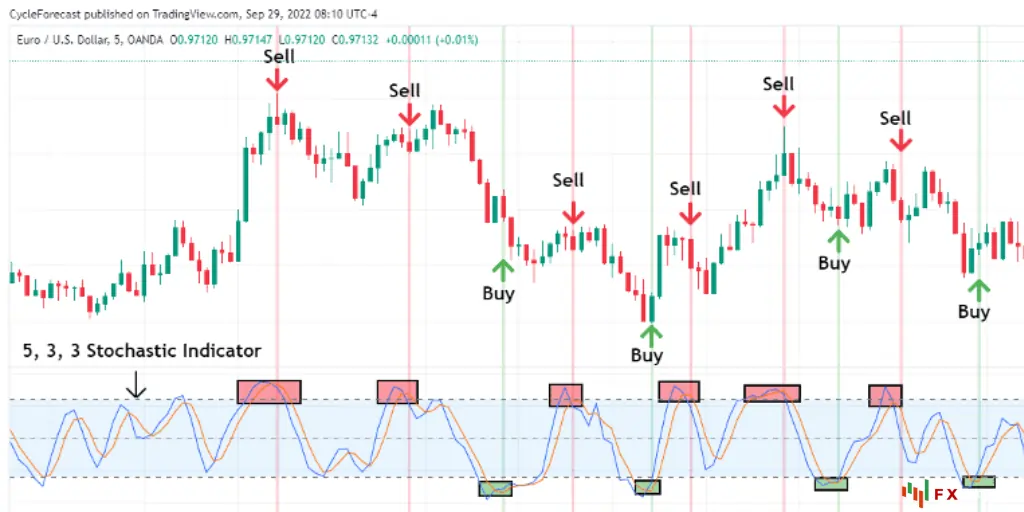In the world of Forex trading, various strategies can be employed to maximize profits and manage risk. One such strategy is scalping, an approach that is unique in its execution and potential outcomes.
In the fast-paced world of forex trading, Scalping in Forex is a strategy that's got traders buzzing. Imagine swooping in, making a quick trade, and darting out with a small profit – all in a matter of minutes or even seconds. Sounds exciting, right? Well, that's scalping in a nutshell. It's like being a financial ninja, striking swiftly and precisely in the currency markets.
👀 What is Scalping?

Scalping in Forex is a trading strategy in which the trader aims to capture small price movements to earn quick profits. These traders, commonly referred to as scalpers, perform multiple trades throughout the day, with each trade typically lasting from a few seconds to a few minutes.
The goal of scalping isn't to capture large moves in the market but rather to exploit short-term fluctuations in currency pair prices. Scalpers often target highly liquid markets, where they can easily enter and exit trades. This high-frequency trading strategy relies heavily on technical analysis and requires a significant time commitment from the trader.
How Scalping Differs from Other Trading Strategies
Scalping in Forex is a unique trading strategy that differs significantly from other Forex trading strategies. Unlike swing trading or position trading, where trades are held for days or weeks, scalping involves making dozens or even hundreds of trades per day.
Compared to day trading, another short-term trading strategy, Scalping in Forex involves much shorter holding periods and smaller profit targets for each trade. While day traders aim to capitalize on larger price moves within the day's trading session, scalpers focus on tiny price changes that occur within minutes.
Scalping also differs from strategies like carry trade, trend trading, range trading, breakout trading, counter-trend trading, and news trading. These strategies are often based on broader market trends, interest rate differentials, economic indicators, or news events while Scalping in Forex primarily focuses on the price action on the chart.
Benefits of Scalping

Scalping, in the context of forex trading, presents several distinct advantages that can suit certain types of traders. These benefits include the potential for quick profits, the ability to utilize market volatility, and increased trading frequency.
Quick Profits
One of the main attractions of Scalping in Forex is the potential for quick profits. Scalpers aim to exploit small price movements in the market, making numerous trades throughout the day that yield small gains. While each individual profit may be small, the cumulative gains from numerous trades can add up to a significant amount over time.
Unlike other trading strategies such as swing trading or position trading, which require traders to wait for longer durations to realize potential profits, scalping allows traders to make profits within a shorter timeframe.
🔗 Utilizing Market Volatility
Scalping in Forex thrives on market volatility. The more volatile the market, the more opportunities there are for scalpers to profit from short-term price fluctuations. This is in stark contrast to strategies like carry trade or trend trading, which generally favor more stable market conditions.
When markets are volatile, prices can change rapidly and unpredictably, creating frequent opportunities for scalpers to enter and exit trades. This makes Scalping in Forex a particularly effective strategy during periods of high market volatility.
High Trading Frequency
Scalping in Forex involves a high frequency of trading. This can be an attractive feature for traders who prefer an active trading style. With scalping, traders can make many trades throughout a single trading session.
This high level of activity can provide more profit opportunities compared to strategies like range trading or breakout trading, which may require traders to wait for specific market conditions before executing trades.
Scalping in Forex can be an effective trading strategy for those who seek quick profits, thrive in volatile market conditions, and prefer a high-frequency trading style. However, it's important to remember that, like any trading strategy, scalping carries risks and requires a thorough understanding of the forex market. For those interested in alternative trading strategies, consider reading about day trading and counter-trend trading.
Risks and Challenges of Scalping

While scalping can be a potentially profitable trading strategy, it's not without its risks and challenges. Understanding these potential pitfalls is key to successfully navigating the Scalping in Forex strategy in the Forex market.
High Stress Levels
Scalping, due to its fast-paced nature, can be a high-stress trading strategy. Traders need to make quick decisions and be able to react in real-time to market movements. This can lead to stress, especially for those new to scalping. Unlike slower-paced strategies such as swing trading or position trading, Scalping in Forex requires constant attention and can be mentally exhausting.
📌 Execution Speed
Execution speed is another major challenge in scalping. Since scalping involves making numerous trades within a short time frame, even the slightest delay in trade execution can affect profitability. Compared to day trading or carry trade, where trades are held for longer periods, the need for speed in Scalping in Forex is paramount. Traders must ensure they have a reliable internet connection and a trading platform that can handle rapid-fire trades.
Broker Limitations
Finally, broker limitations can pose a challenge to scalpers. Some brokers may have restrictions on scalping, such as minimum time limits between trades or prohibitions on certain types of rapid trading. These limitations can hinder the effectiveness of a Scalping in Forex strategy, so it's important to understand your broker's policies before committing to scalping.
Scalping, like trend trading, range trading, breakout trading, counter-trend trading, or news trading, has its own set of risks and rewards. By understanding the challenges inherent to scalping, traders can better prepare and refine their trading strategies to maximize their potential for success.
Developing a Scalping Strategy

Creating a successful scalping strategy requires careful planning and consideration. There are several key factors to take into account when developing a Scalping in Forex strategy, including selecting the right currency pairs, setting stop-loss and take-profit levels, and monitoring economic indicators.
Choosing the Right Currency Pairs
The first step in developing a Scalping in Forex strategy is selecting the appropriate currency pairs. Generally, traders should focus on major currency pairs due to their high liquidity and tight spreads. These characteristics can help to maximize the profitability of Scalping in Forex strategies.
When choosing a currency pair, traders should also consider the pair's volatility. High volatility can increase the potential for profits, but it can also heighten the risk of losses. Therefore, traders need to strike a balance between risk and reward when selecting their currency pairs.
🔗 Setting Stop-Loss and Take-Profit Levels
Stop-loss and take-profit levels are crucial components of any Scalping in Forex strategy. A stop-loss order can limit potential losses by automatically closing a trade when the market moves against the trader's position. On the other hand, a take-profit order can secure profits by closing a trade when the market moves in the trader's favor.
Determining the appropriate stop-loss and take-profit levels requires an understanding of the market's volatility and the trader's risk tolerance. As a general rule, it's advisable to set stop-loss and take-profit levels that align with the trader's risk-to-reward ratio.
Monitoring Economic Indicators
Economic indicators can have a significant impact on the forex market, making them an important consideration for any Scalping in Forex strategy. These indicators can include data on inflation, unemployment rates, gross domestic product (GDP), and other key economic metrics.
By staying abreast of these economic indicators, traders can anticipate market movements and adjust their strategies accordingly. This can help to maximize profitability and minimize risk in scalping.
Monitoring economic indicators requires traders to stay up-to-date with economic news and developments. This can be achieved through economic calendars, news alerts, and other resources. For more information on how news events can impact forex trading, check out our article on news trading.
Tools and Indicators for Scalping

Success in scalping largely depends on the timely detection of minute price movements in the market. To achieve this, traders rely on several tools and indicators. Key among these are Moving Averages, Relative Strength Index (RSI), and Bollinger Bands.
Moving Averages
Moving averages are a core technical analysis tool utilized in scalping. They smoothen price data by generating an average price over a specified number of periods. The two most commonly used moving averages in Scalping in Forex are the Simple Moving Average (SMA) and the Exponential Moving Average (EMA).
The SMA gives equal weight to all data points, while the EMA prioritizes recent data. For scalpers, the EMA is often favored due to its sensitivity to recent price changes. When the price crosses the EMA, it can be a signal to enter or exit a trade.
Relative Strength Index (RSI)
The Relative Strength Index is an oscillator that measures the speed and change of price movements. It helps traders identify overbought or oversold conditions in the market. While not exclusive to scalping, RSI plays a crucial role in this strategy.
In the context of scalping, traders often use a 15-minute timeframe with an RSI period of 14. When the RSI crosses above 70, the market is considered overbought, which could signal a selling opportunity. Conversely, when the RSI drops below 30, the market is deemed oversold, potentially indicating a buying opportunity.
Bollinger Bands
Bollinger Bands are volatility indicators that consist of a middle band (SMA) and two outer bands calculated based on standard deviation. They help identify levels of high and low volatility in the market, which are crucial for scalping.
In a typical Scalping in Forex strategy, traders might enter a sell order when the price touches the upper Bollinger Band and buy when it hits the lower Bollinger Band. The assumption is that the price will revert to the mean, resulting in quick profits for the scalper.
Tips for Successful Scalping

Mastering the art of scalping in forex trading requires discipline, risk management, and continuous learning. Here are some tips to help you navigate this high-speed trading strategy successfully.
Stay Disciplined
Discipline is a critical factor in successful scalping. Traders need to stick to their trading plan, execute trades swiftly, and stay focused on their strategy despite the fast-paced and stressful nature of scalping.
A disciplined trader knows when to enter and exit trades, based on their pre-determined criteria. They do not let emotions sway their decisions, which is crucial when dealing with the quick profit or loss scenarios typical of scalping.
It's also important to have a strict routine, as the high frequency of trades can be mentally taxing. A disciplined approach helps maintain consistency, which is key in scalping, unlike other trading strategies such as swing trading or day trading.
Practice Risk Management
Risk management is essential in scalping, given the high volume of trades and the potential for significant losses. This means setting stop-loss and take-profit levels for each trade, to limit potential losses and lock in profits when targets are reached.
Risk management also involves diversifying trades across various currency pairs to spread the risk. In contrast to position trading or carry trade strategies, which might focus on a single currency pair over a long period, Scalping in Forex necessitates a broader focus.
Continuous Learning and Adaptation

The forex market is dynamic, with constant changes in currency values and economic conditions. Therefore, successful scalpers must continually learn and adapt their strategies to these changing market conditions.
This involves staying updated with economic news that could impact currency values, understanding market trends, and refining trading strategies based on these insights. Scalpers must be flexible and ready to switch strategies when necessary, moving between techniques like trend trading, range trading, breakout trading, counter-trend trading, or news trading as market conditions dictate.
Scalping requires a unique skill set, including the ability to make quick decisions, a deep understanding of market analysis, and a high tolerance for risk. By staying disciplined, practicing effective risk management, and continuously learning and adapting to the market, traders can harness the potential of scalping to achieve their trading goals.
Common Queries Related to Scalping in Forex
What is Forex Scalping?
How does Forex Scalping work?
What are common Scalping Strategies?
Which Technical indicators are used for Scalping?
What are the risks of Forex Scalping?
What psychological traits are important for Scalping?
What tools and platforms are needed for Scalping?
💭 Conclusion
Forex scalping, with its rapid pace and potential for frequent profits, offers a compelling strategy for seasoned traders. By capitalizing on small price movements and executing numerous trades within a day, scalpers can accumulate significant returns.
However, this approach demands a high level of discipline, quick decision-making, and a robust understanding of technical analysis. While the rewards can be substantial, the risks are equally pronounced, necessitating effective risk management and a keen eye on market dynamics. For those equipped with the necessary skills and temperament, forex scalping can be a highly rewarding, albeit challenging, trading strategy.






